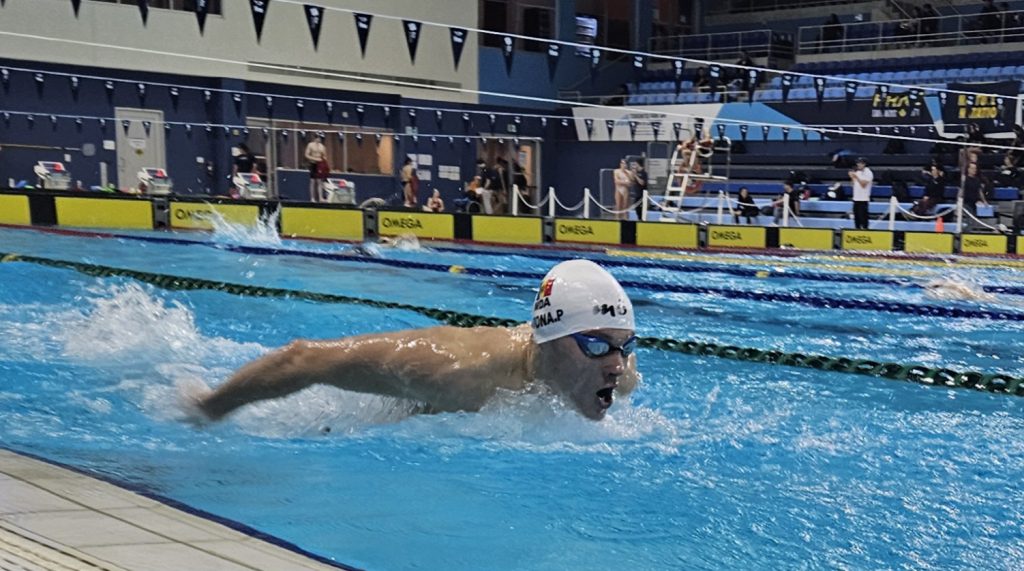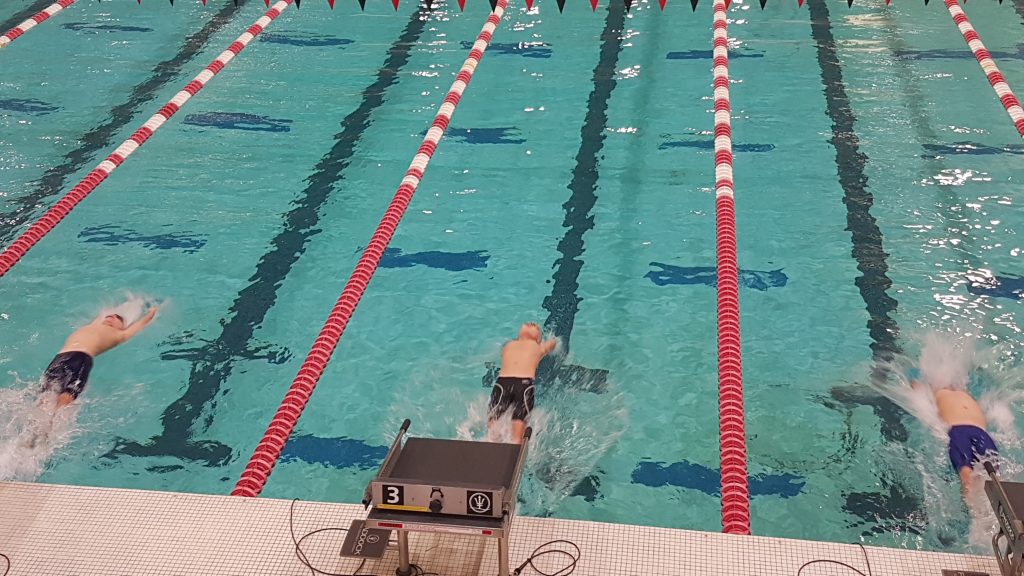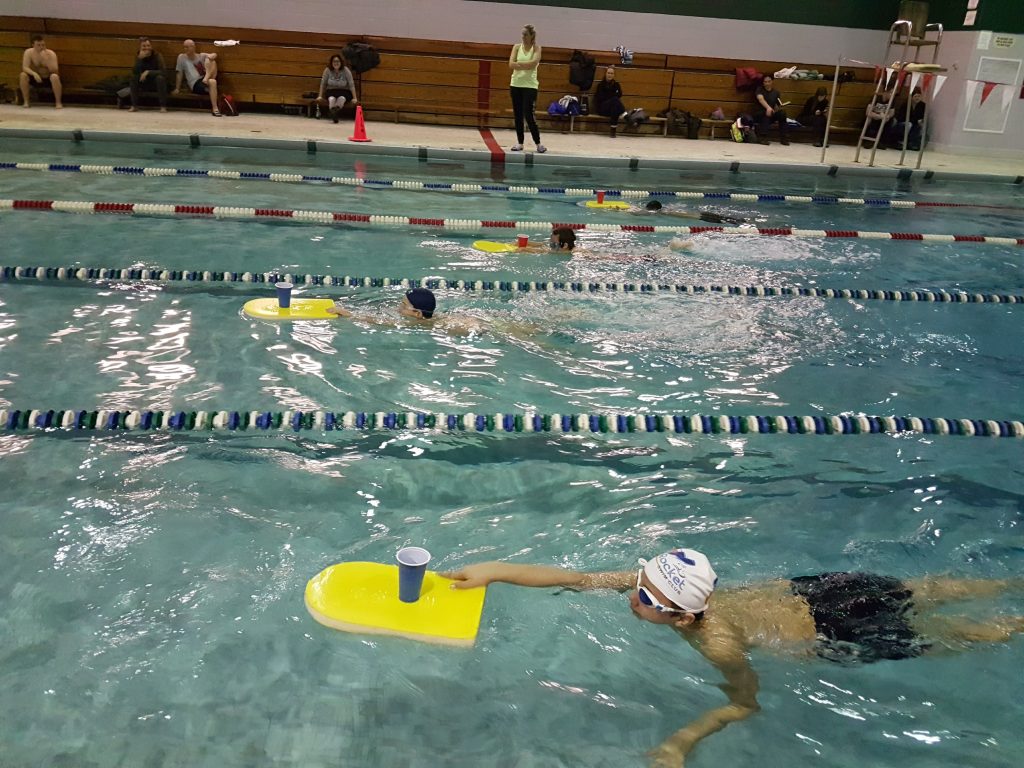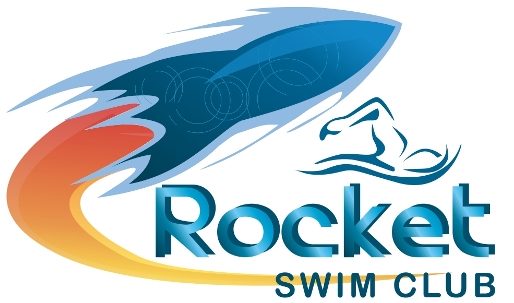Swimming is not only an essential life skill but also a great way to exercise and relax.
However, one of the first questions aspiring swimmers often have is,
“How many swimming lessons does it take to swim?”
The answer isn’t straightforward, as it varies depending on age, fitness level, fear of water, and previous exposure to swimming.
In this guide we’re going through this topic and try to give you the actual answer that you’re looking for. What are you waiting for then? Let’s dive into it-
Age and Learning to Swim
Wondering what is the best age to Start Swimming?
For children, the process can be quicker because they are usually more adaptable and less fearful.
Typically, children can begin to learn basic swimming skills in as few as 8-12 lessons. These initial lessons focus on getting comfortable in the water, basic stroke techniques, and safety practices.
Related: Essential Guide to Baby Swimming Lessons
For adults Swimming, the learning curve might be steeper due to ingrained fears or less flexibility, potentially requiring more sessions.
Additionally, children’s lessons often incorporate games and playful learning strategies that make them more receptive to new skills, thus speeding up the learning process.

Fitness Levels and Swimming
Physical fitness plays a crucial role in how quickly one can learn to swim. Individuals who are generally active might find it easier to adapt to the physical demands of swimming.
In contrast, those who have lived a more sedentary lifestyle might need additional time to build endurance and strength in the water.
This doesn’t just impact the number of lessons needed but also the length and intensity of each session. Those who are less fit might also experience more fatigue initially, which can slow the pace of learning.
The Role of Fear in Learning to Swim
Fear of water, or aquaphobia, can significantly extend the learning process. Instructors typically dedicate initial lessons to helping students overcome this fear through gradual exposure and positive reinforcement.
This might mean that before actual swimming techniques are taught, several sessions might be used to build comfort and confidence in the water.
Overcoming fear is a crucial step that can’t be rushed, as comfort in the water is essential for effective learning.
Technique and Skill Progression
Once comfort and basic safety are established, instructors focus on teaching different swimming strokes such as the freestyle, backstroke, breaststroke, and butterfly.
Each stroke requires different skills and levels of coordination.
Some people might pick up these techniques quickly, while others may need more practice and correction, thus increasing the number of lessons needed.
Moreover, the precision and refinement of each stroke can take a considerable amount of time to master fully.

Learning Environments and Their Impact in Swimming
The environment in which one learns to swim can also affect how many lessons are necessary. Private lessons, for example, often lead to faster progress compared to group lessons, as the instruction is more tailored to the individual’s needs.
However, group lessons offer the advantage of learning through observation and peer encouragement, which can be beneficial for some learners.
Related: Why Everyone should learn to Swim
Setting Realistic Expectations
It’s important for learners to set realistic expectations and goals with their instructors. While basic water safety and the fundamentals of swimming can often be learned in around 8-12 lessons, mastering swimming as a skill with proficiency in multiple strokes might require ongoing lessons and practice over several months or even years.
Discussing goals can help tailor the lessons to focus on particular skills, whether the goal is to swim for safety, competition, or leisure.
Long-Term Development
Becoming a proficient swimmer is an ongoing process. Even after the basic skills are acquired, there are advanced techniques, speed enhancements, and endurance training to consider.
Regular swimming can also be a part of a healthy lifestyle, offering benefits beyond just the ability to swim. Continued lessons might focus on refining technique, improving speed, and building stamina.

Conclusion
In conclusion, the number of swimming lessons it takes to swim varies widely among individuals. Children might learn the basics faster than adults, fit individuals might progress quicker than those less active, and those with a fear of water might need more time to adjust.
On average, with regular lessons and some practice, most can expect to learn basic swimming skills within 8-12 lessons.
However, becoming a confident swimmer might take additional time and effort, underlining the importance of patience and persistence in this rewarding journey.
As with any skill, consistency is key, and the rewards of learning to swim are well worth the investment.
Dive into Excellence with RocketSwim Club in Toronto’s High Park Area!
Whether you’re aiming to take your swimming to a competitive level, seeking a more relaxed approach with our non-competitive program, or making a splash with the whole family Swimming, RocketSwim Club in Toronto is your go-to destination.
Our expert coaches are dedicated to helping you achieve your swimming goals in a supportive and dynamic environment.

